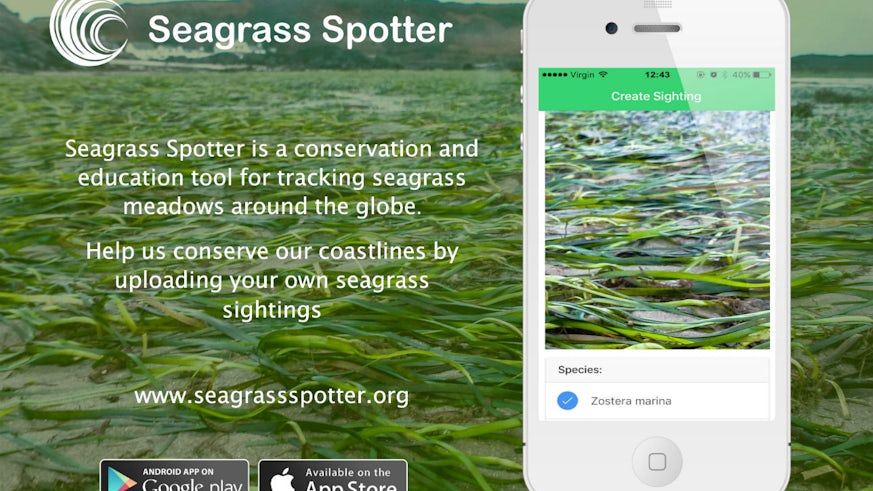SeagrassSpotter
8 June 2018

A new version of an app that could lead to new discoveries about one of the ocean’s most under-appreciated habitats – seagrass - has been launched by Project Seagrass to coincide with World Oceans Day (8 June).
SeagrassSpotter allows people from around the world to help researchers based at Cardiff University’s Sustainable Places Research Institute understand and conserve seagrass.
Originally launched in 2017, the app and associated website seagrassspotter.org, has been updated and now includes a comprehensive global seagrass guide.
To date around 300,000km2 of seagrass has been mapped around the world, but experts have speculated that there could be up to 4 millionkm2 of seagrass.
Seagrass is vital to the world’s oceans, supporting the productivity of one fifth of the world’s fisheries.
Dr Leanne Cullen Unsworth, of the Sustainable Places Research Institute and Project Seagrass said: “With SeagrassSpotter, ocean enthusiasts around the world can become citizen scientists who contribute to marine conservation with just a few taps of their phone. We’ve made some important scientific breakthroughs with seagrass in recent years, but they remain incredibly threatened and are still under-appreciated globally.
“So far, through SeagrassSpotter, we’ve collected over 1,000 records of seagrass around the UK and northern Europe and we hope to obtain 10,0000 records through the new version of the app.
“The new version includes the first global easy to use identification guide for seagrasses. Simply put, a user can take photo of intertidal seagrass using the app, or upload a picture taken with any camera direct to the website. The user will then be asked to identify and describe what they’ve seen. This information is critical for understanding the health of these systems around the world. We also plan to release translated versions of the app over the coming year.”
SeagrassSpotter is available here.
